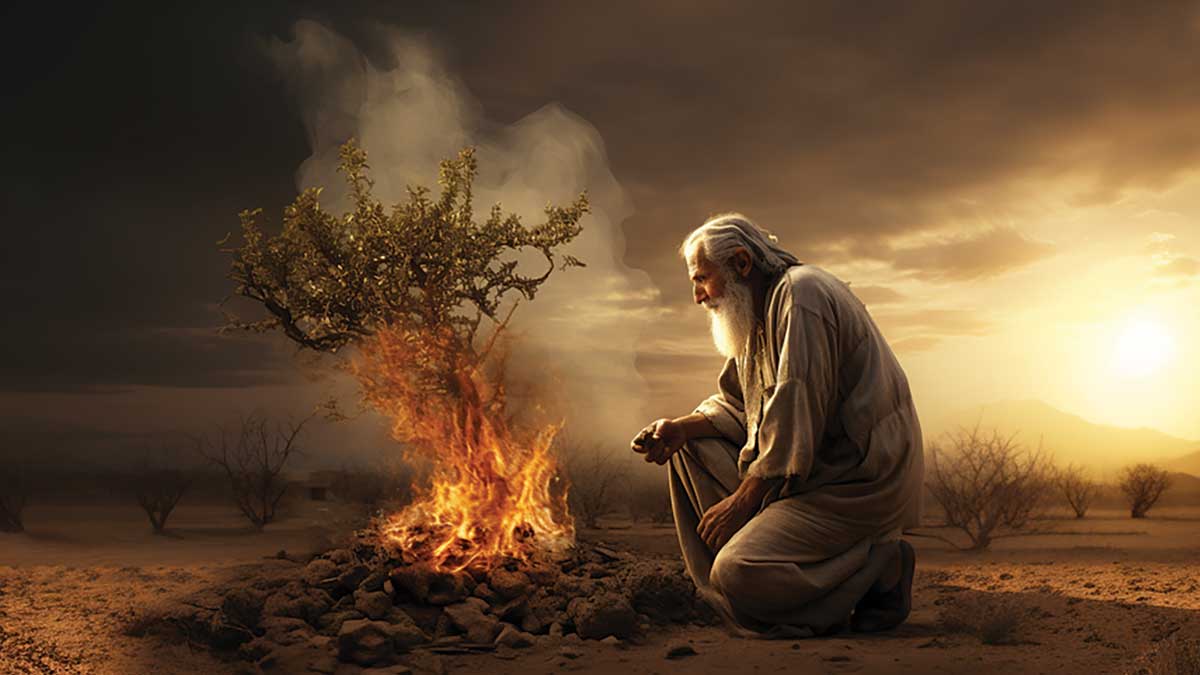The word theophany is one of those technical terms that theologians often use to describe an appearance of God that is usually found in the Bible. While technical terms can sometimes be a little daunting, they are usually only “handles” for ideas or concepts that exist within a framework, in this case “theology”.
The word theophany is made up of two components, “theos” (god) and “phaneia” (appearance), and despite the fact that it is a technical term, I think it is a magnificent word and quite appropriate given what it means!
The Bible contains many “theophanies” at various times and in various forms. Each one is unique and different and serves a specific function addressing a specific situation. The most familiar and well-known theophany is the “appearance” of God in the form of Jesus, which is known by another theologically technical term: “the Incarnation”.
Not only is the Incarnation the most well-known theophany, it is also the most important. The Incarnation provided something that did not exist throughout eternity past—a full “intersection”1 between Creator and creation2. This “intersection” would have been astonishing under “normal” circumstances, but this “link” was actualised under the most trying of circumstances: in the face of creaturely challenges of the highest order relating to God’s character and government, and into a world that was saturated by sin, rebellion and alienation.
This Magnificent Theophany, graphically hinted at in Genesis 3:15 and beautifully illustrated in the vision of Jacob’s ladder in Genesis 28:10-22, showcases before the universe like no other depiction could the extent of regard that God has for His own character.
We may well struggle to align what we know about God within our sin-saturated world with such a statement because it is suggestive of some form of inward focus. However, when God—who is Triune—seeks to draw creation to the natural and agape/love-centric heart of creation via an understanding of His character, this drawing is done as an act of selfless abundance for creation. Indeed, the purpose of this drawing is to enrich our understanding of the Creator God which in turn will compel us to draw closer.
As we draw closer to the incarnate Creator God in Jesus, the depth of uncleanness in our own nature which causes alienation is exposed through the work of the Holy Spirit who points us to the solution—Jesus, with an invitation to draw even closer. Thus, we see an ever-tightening circle of understanding (vertical principle) designed to cleanse the individual for the purpose of having the capacity to draw even closer while revealing the Creator to creation in our own experience (horizontal principle).3
God’s character is who He is, and who He is draws all creation, but primarily intelligent creation, to Himself. Indeed, sin takes place when intelligent creation places itself outside of the will of God. When the focus of creation is on self and not the Creator, that creation can be drawn into sin and its resulting destruction and confusion.
The Incarnation is often expressed as relating to us and our salvation—which is true to the extent that our salvation is a result and consequence of a response to a revelation of God’s character.
However, far from being a “self-focused” event (either relating to “us” or relating to “God”) the Incarnation is the natural consequence of His ontological Being. This exists within a framework of agape/love that is not fully grasped by a creation that is struggling to comprehend the infinite and selfless nature of the Godhead.
This is true not only for humanity but also for angels or beings in the heavenly realm. Indeed, so incomprehensible is this agape/love, that the Incarnation, which involved the Creator stepping down from the throne of the universe to walk the path to Calvary and provide a glimpse into that selfless love, would have never entered the mind of any angelic creation, let alone the confused and self-absorbed mind of Lucifer.Indeed, failing to find the language to describe the love of God in His act of Incarnation, Paul in Ephesians 3:17-21 asks us to consider “the breadth and length and height and depth, and to know the love of Christ surpassing knowledge”4 while John simply invites us to bask in that revelatory and mind-bending event by “beholding” (1 John 3:1).
In one sense, we could say that the Incarnation is the inevitable and actualised “vehicle” through which God can pour out a revelation of His character for the benefit of the entire creation5 . A “vehicle” that in the context of sin and rebellion reveals the natural and ongoing work of atonement or reconciliation that has in principle always existed, but of necessity has been actualised since the existence of rebellious intelligent creation.
What a God, that He would go to such selfless and abundant lengths to reveal Himself—unbelievable, indescribable, incomprehensible . . . magnificent.
- It’s difficult to encapsulate what this “intersection” represented in a single word. You eventually run out of superlative adjectives to describe its nature and purpose.
- While it is true that the Body Temple relationship between Creator and creature did previously exist, it took the Incarnation to reveal a full manifestation.
- See Steps to Christ p64,65: “The closer you come to Jesus, the more faulty you will appear in your own eye . . . [which] drives us to Him who can pardon [who reveals] Himself in power.” The last three paragraphs of the chapter brilliantly describe this principle in action.
- Berean Literal Bible, italics mine.
- Jesus said, “And I, if I am lifted up from the earth, will draw all peoples to Myself.” (NKJV). The NKJV inserts the word peoples, as do many other translations—while the word peoples is suggestive, a literal translation just has “draw all to Myself” (see: John 12:32, Berean Literal Bible).
Randall Ibbott is a freelance IT consultant from Central Coast, NSW.






